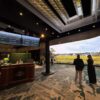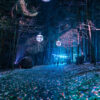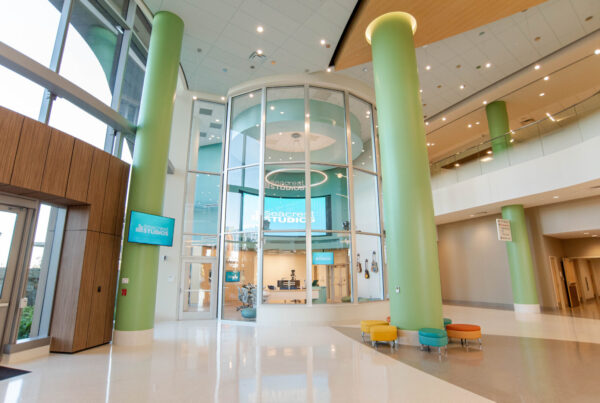From incandescent lights to fluorescent bulbs and now with LED lighting, there have been huge strides in the advancement of lighting. Similarly, there have been massive advancements in the control of lighting over time. Think about light switches, dimmers, and even lighting zones. These innovations are all now part of our modern world, and honestly, many of us couldn’t think about living without them.
New apps like Nest and Ring allow people to control the lights in their house even if they’re halfway across the world. This revolution doesn’t begin and end in our houses. We’ve reached a new era of lighting control, and for innovative corporations and employers, it could be a new era of productivity as well.
Thanks to recent research, we know that changing lighting and moods throughout the course of a workday encourages additional productivity. Additionally, regulating things like lighting, temperature, and even screen brightness can be beneficial for employee health – even if they’re unaware of the changes. With so many benefits associated with such a simple office component, highly controlled office lighting will be a common practice in the workplace soon.
While lighting may be commonplace (after all, every office has it) smart lighting fixtures require complex lighting grids, incredible attention to detail, and amazing control from experienced specialists. In fact, this is one of the biggest roadblocks to customizable and complex lighting being widely used across the American workplace.
Circadian lighting
From a broad workplace perspective, smart lighting is already a game-changer. As the day progresses, an office space can immediately dim, or become brighter, depending on the time of year and day. But this isn’t all there is to it. Before long, individual employees will be able to customize targeted lighting schemes based on their unique needs and work habits. Let’s say one employee works in front of a screen all day and needs dimmer light, while another edits prints all day and needs brighter light. The need is there, and as other parts of our lives become more customizable and tech-enabled, why not office lighting?
With the old way of doing things having two zones like this would require an electrician to wire separate zones with a separate control. This is a very rigid way of configuring a system. If you wanted every employee to have explicit control over their lighting environment, you would essentially need a light switch for each employee. With newer connected lighting fixtures, or those controlled and powered over category cable, individually addressable LED lights allow for pinpointed control of different lighting in the same space on one grid. In a cube group of four employees under the same LED grid, one employee could dim his or her lights without impacting the other members of the cube group – and without requiring an electrician to come in to rewire everything.
From a productivity standpoint, simply giving employees the option to customize their office lighting can give them the efficiency boost they need. Let’s face it – we all go through the afternoon slump once in a while. On top of that, the combination of harsh overhead lighting, the glow of a computer, and the constant buzz of a smartphone can be the recipe for a headache. Customizable lighting creates productive, efficient employees, and is one-way technology is enabling the modern workplace.
Wondering how this kind of custom control over lighting can help increase your workforce productivity? At Bluewater, we’re helping companies of all sizes realize their productivity potential with innovative, creative tech-forward solutions. As a leader in control systems, we’re no stranger to connecting the entire office environment – lighting, HVAC, window treatment, security, and of course AV. Schedule a one-on-one consultation with Bluewater today to better understand what’s possible!











